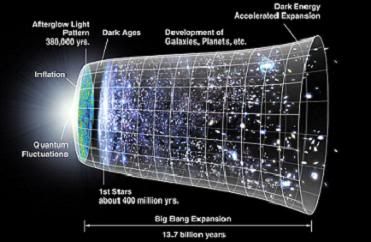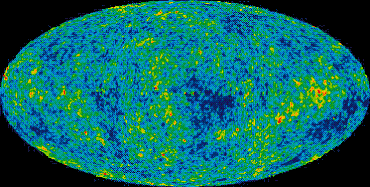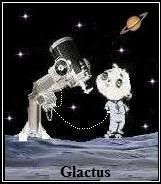Post by glactus on Dec 5, 2011 1:29:03 GMT
Galaxies recede from each other. When a Galaxy recedes at one quarter the speed of light we can see three quarters of its brightness. When it recedes at half the speed of light we can see half its brightness. When it recedes at three quarters the speed of light we can only see one quarter of its brightness, and when it recedes at the speed of light there's a shut off. We can only see those galaxies which receed within the speed of light.

The expanding Universe
Hubble's law is the name for the astronomical observation in physical cosmology that: all objects observed in deep interstellar space are found to have a doppler shift observable relative velocity to Earth, and to each other; and that this doppler-shift-measured velocity, of various galaxies receding from the Earth, is proportional to their distance from the Earth and all other interstellar bodies.

The observable Universe
In effect, the space-time volume of the observable universe is expanding and Hubble's law is the direct physical observation of this process. It is considered the first observational basis for the expanding space paradigm and today serves as one of the pieces of evidence most often cited in support of the Big Bang model.

Andromeda coming towards us at high speed
Although widely attributed to Edwin Hubble, the law was first derived from the General Relativity equations by Georges Lemaître in a 1927 article where he proposed that the Universe is expanding and suggested an estimated value of the rate of expansion, now called the Hubble constant. 2 years later Edwin Hubble confirmed the existence of that law and determined a more accurate value for the constant that now bears his name. The recession velocity of the objects was inferred from their redshifts, many measured earlier by Vesto Slipher (1917) and related to velocity by him.
The law is often expressed by the equation v = H0D, with H0 the constant of proportionality (the Hubble constant) between the "proper distance" D to a galaxy (which can change over time, unlike the comoving distance) and its velocity v (i.e. the derivative of proper distance with respect to cosmological time coordinate.
To see superb 3 minute and 55 second video of the expanding universe just click on the link below. Has sound. Full screen option bottom right.
www.youtube.com/watch?v=iCI8K9mD_yU

Credits: These are non copywrite images
Text by Wikipedia
Video by Youtube

The expanding Universe
Hubble's law is the name for the astronomical observation in physical cosmology that: all objects observed in deep interstellar space are found to have a doppler shift observable relative velocity to Earth, and to each other; and that this doppler-shift-measured velocity, of various galaxies receding from the Earth, is proportional to their distance from the Earth and all other interstellar bodies.

The observable Universe
In effect, the space-time volume of the observable universe is expanding and Hubble's law is the direct physical observation of this process. It is considered the first observational basis for the expanding space paradigm and today serves as one of the pieces of evidence most often cited in support of the Big Bang model.

Andromeda coming towards us at high speed
Although widely attributed to Edwin Hubble, the law was first derived from the General Relativity equations by Georges Lemaître in a 1927 article where he proposed that the Universe is expanding and suggested an estimated value of the rate of expansion, now called the Hubble constant. 2 years later Edwin Hubble confirmed the existence of that law and determined a more accurate value for the constant that now bears his name. The recession velocity of the objects was inferred from their redshifts, many measured earlier by Vesto Slipher (1917) and related to velocity by him.
The law is often expressed by the equation v = H0D, with H0 the constant of proportionality (the Hubble constant) between the "proper distance" D to a galaxy (which can change over time, unlike the comoving distance) and its velocity v (i.e. the derivative of proper distance with respect to cosmological time coordinate.
To see superb 3 minute and 55 second video of the expanding universe just click on the link below. Has sound. Full screen option bottom right.
www.youtube.com/watch?v=iCI8K9mD_yU
Credits: These are non copywrite images
Text by Wikipedia
Video by Youtube


